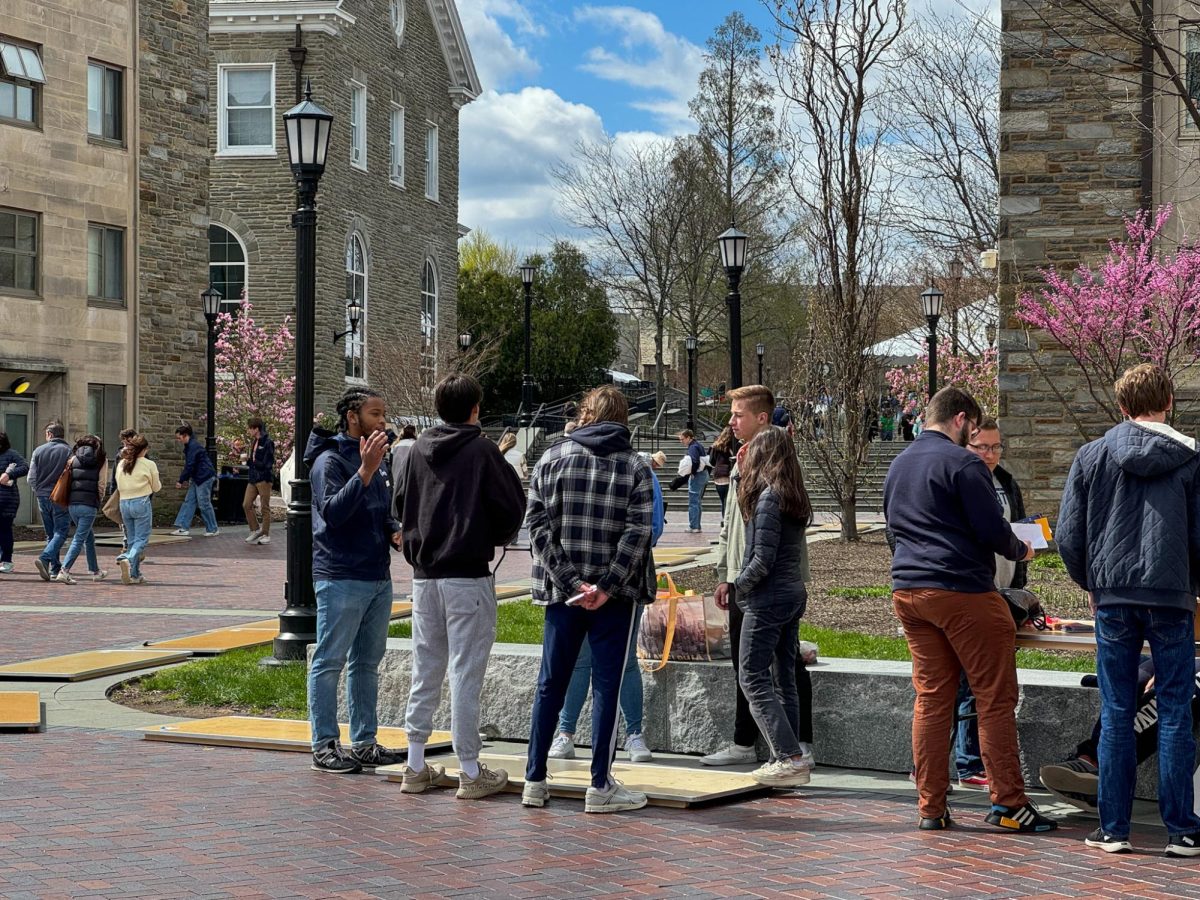Content warning: Mentions of domestic violence and rape.
On Tuesday, Sept. 30 at 2 p.m., the University’s Department of Public Safety released the 2024 Annual Security and Fire Safety Report (ASR) to all students. This report, distributed every year, is mandated by federal law to be shared with all students and employees.
The report features the University’s Crime Statistics, which are shared in compliance with both federal laws and Pennsylvania state laws in two respective charts. The definitions of crime differ between the two different charts, and so the distribution differs statistically among the two. The crimes listed on these charts are recorded as the year the incident was reported, not necessarily the year the incident occurred.
The report features statistics about various crimes on campus, breaking down the different categories of crime. Within the statistics themselves, the numbers appear to be extreme in some categories, but are actually influenced by one continuing incident that took place over a couple of years. Otherwise, the numbers are fairly standard when compared to previous reports.
When referencing the breakdown of this year’s statistics, Villanova Director of Public Safety and Chief of Police, David Tedjeske explained the deviation in the numbers from previous years. The Villanovan spoke with Tedjeske, as well as Title IX Coordinator Ryan Rost, to give context to the unusually high number of incidents.
The reports for the categories of “rape” and “domestic violence” are significantly higher than in previous years: the incidence of rape increasing times six, and domestic violence increasing by an additional 400 counts. However, this increase is not due to a general increase in the amount of crime on campus. Instead, Tedjeske explained that these unusually high numbers are due to a single report involving a two-year-long abusive dating relationship that took place between 2018 and 2020.
This incident was reported to the Department of Public Safety in December of 2023. The report came from a faculty member, who initially learned from a student that she had been in a two-year relationship characterized by physical abuse and sexual violence. The abusive relationship took place three years prior to the reporting date, and the alleged assailant no longer attended Villanova at the time it was reported to the University. The faculty member notified the Title IX office, which led to a meeting between the complainant and Tedjeske.
In this meeting, the University Department of Public Safety worked with the complaintant to estimate the counts of rape and domestic violence that had occurred within the two years of their relationship. These counts include only incidents that occurred on campus. Both students lived on campus for most of their time at Villanova, though the report may leave out some of the violence incurred in the alleged assailant’s off-campus residence for a period of time. After the meeting between Tedjeske and the female student, she declined to partake in a criminal investigation or prosecution. Now, both the complainant and the alleged assailant have graduated from the University and are no longer on campus.
Ordinarily, the number of reported rapes per year would be around 10, according to Tedjeske. Within the federal crime statistics report, the numbers in the “rape” category are much larger than normal. Fifty-six of the 66 reported rapes are due to this single report. Additionally, 415 of the 418 incidents in the “Domestic Violence” category were reported within that one case. The singular incident of aggravated assault in this report was a result of this relationship as well. According to Tedjeske, the aggravated assault was similar in the nature of the other assaults, and no weapons were involved. The result of the aggravated assault resulted in serious injury for the complainant.
Comparatively, the mandated crime report for the state of Pennsylvania has no set category for domestic or dating violence. The domestic violence cases from the federal chart show up on this chart as “Other Assault.” All but 10 of the 425 reports of “Other Assault” are attributed to the single report from this two-year relationship.
In response to this report of assault, as well as the other incidents of sexual and domestic violence on campus, both Tedjeske and Rost emphasized the importance of bystander intervention in regards to relationship violence.
“Sometimes people are hesitant to get involved if they see signs of an unhealthy relationship,” Rost said. “Helping a friend in an unhealthy relationship is hard and people may think it is none of their business. It is important to be supportive of friends and come from a place of care and concern. Villanova provides various programs and campaigns designed to promote a healthy campus culture and strategies to identify and prevent relationship and sexual violence.”
This report of domestic and sexual violence follows what has been an influx of sexual assault reports disclosed in the month of September. The news of an Uber driver raping a female Commons resident, as well as the recent civil lawsuit filed against the University in a federal sexual assault case, has created notable discussion within the Villanova community surrounding safety concerns on campus.
In light of these events, Tedjeske and the Department of Public Safety are actively working on improving physical security on campus. Tedjeske shared that some future changes include an initiative to replace all of the blue light systems across campus over the next several years. This includes a new project to add nine new blue light phones on South Campus, including two new ones on the Wildcat Path. According to Tedjeske, the new phones have integrated video cameras and speakers that will announce Nova Alert messages. Other safety initiatives include the addition of metal detectors at all major events , and testing the functionality of doors on campus. As part of this project, the Department of Public Safety is working on replacing external doors in St. Mary’s Hall with new ones. Additionally, students are encouraged to report malfunctioning doors or other security concerns to Chief Tedjeske at David.tedjeske@villanova.edu.
“We are continuously working to improve safety and security,” Tedjeske said. “Whether that be physical security, such as cameras, Wildcard and license plate readers or through the deployment of our staff, focused patrols in certain areas, or through policy changes… We also identify areas where we believe there needs to be additional physical security in place.”
For more information on this year’s security report, please visit: https://www1.villanova.edu/university/public-safety/reports-policies/annual-security-fire-safety-report-2024.html








